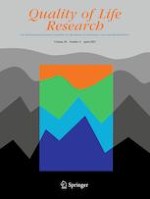28-11-2020
Health care access and health-related quality of life among people with diabetes in the Southern Cone of Latin America—a cross-sectional analysis of data of the CESCAS I study
Gepubliceerd in: Quality of Life Research | Uitgave 4/2021
Log in om toegang te krijgenAbstract
Purpose
Little is known on the association of health care access and health-related quality of life (HRQoL) in people with diabetes in the Southern Cone of Latin America (SCLA).
Methods
We analyzed data of 1025 participants of CESCAS I. To determine HRQoL, we used the SF-12 physical (PCS-12) and mental component summary (MCS-12). We compared four groups regarding HRQoL: (a) insured people without self-reported barriers to health care, (b) uninsured people without self-reported barriers to health care, (c) insured people with self-reported barriers to health care, and (d) uninsured people with self-reported barriers to health care. We conducted linear regressions with PCS-12 and MCS-12 as outcome. We adjusted for sociodemographic and disease-related factors and having access to a primary physician.
Results
In the first group, there were 407, in the second 471, in the third 44, and in the fourth group 103 participants. Compared to the first group, PCS-12 was 1.9 points lower (95% Confidence Interval, CI: − 3.5, − 0.3) in the second, 4.5 points (95% CI: − 8.1, − 1) lower in the third, and 6.1 points lower (95% CI: − 8.7, − 3.6) in the fourth group. Compared to the first group, MCS-12 was 0.6 points lower (95% CI: − 2.7, 1.4) in the second, 4.8 points lower (95% CI: − 9.3, − 0.3) in the third, and 5.8 points lower (95% CI: − 9.1, − 2.5) in the fourth group.
Conclusion
In the SCLA, impeded access to care is common in people with diabetes. Self-reported barriers to care may be more important than insurance status in determining HRQoL.
